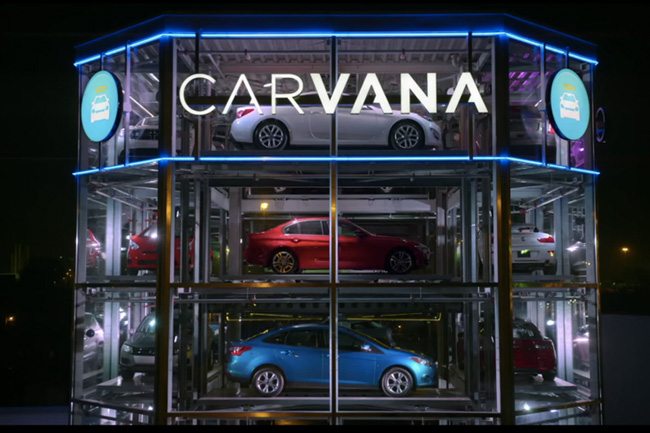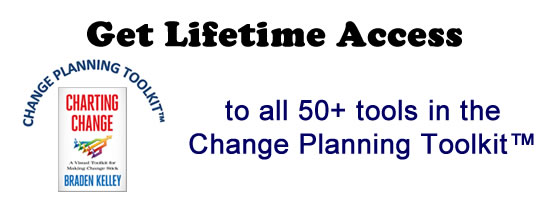Disrupt Your Competition

Lessons From Uber, Amazon, Walmart And Carvana (Who Is Carvana?)
Every industry is evolving. Competitors are entering industries with new business models that promise a better experience. In most cases, it’s a more convenient experience. I’ve been writing about the power of convenience in some of my Forbes.com columns during the past several months. Uber used convenience to disrupt the taxicab industry. Amazon did it to the online retail industry. Chewy.com is doing it to the pet industry. How does it work? These companies have a laser focus on customer service and experience. They excel in reducing friction and making life easier for their customers. And, by offering that kind of experience, they were able to disrupt their competition, and in some cases, their entire industry.
I’m doing some research in preparation for a speech to a major automobile manufacturer. I’ll be talking to the top 30 dealers in the country. The speech will focus on convenience, with content based on the Six Convenience Principles featured in my new book. Assuming a customer wants a specific brand, and assuming the auto dealership delivers good customer service (and all of them promise that), how can the dealership (or any business) separate itself from the competition? The simple answer is to out-convenience them.
While working on the speech, I realized that the automotive industry is a great case study that any business, in any industry, can learn from. How can an auto dealership offer more convenience to its customers? What value can it add for customers that is different from the traditional offerings? Let’s take a look.
What are dealerships and auto manufacturers currently doing? They have amplified their online presence. For some brands, you can visit a website and design your car, selecting from all the options that are available. Everything from color, engine size, wheel size, sound system and more can be chosen from the comfort of your home or office, then you can visit a dealership, ready to buy. Smart dealerships are offering customer-friendly hours (in the evenings after work), and their service departments may be open on evenings and weekends. A dealership can provide pre-paid maintenance services to make it easy on the customer’s budget. The dealership can deliver a new car to the customer’s home and arrange for pickup and return of the vehicle when it needs service. There are many opportunities for a dealer to sell beyond the product and price by focusing on value-added convenience.
The used car industry has opportunities too. While customers can’t choose different options, they can shop for cars that are showcased online. So, what’s the major change in the world of automotive sales? Access. Dealers network with each other to bring customers a bigger selection. And, then companies like CarMax come along and build a network of retail stores – more than 150 of them with more than 45,000 vehicles to choose from. Think about how Walmart disrupted local retailers with its larger stores offering a big selection and reasonable prices. CarMax is Walmart-ing the car industry.
What CarMax and Walmart offer is access. Lots of locations with customer-friendly store hours. While 150 CarMax locations doesn’t compare to the 4,000-plus Walmart stores, it doesn’t matter. The expansion into major markets with multiple locations is the access necessary to impact and possibly disrupt local dealerships.
But not so fast, Carmax. There’s now another chain of used-car dealerships that is offering a new and unique experience. Carvana has expanded to 75 markets with 13 car vending machines nationwide and more than 11,000 used cars for sale. One of its unique value propositions is a vending machine that is included at each facility. Imagine a gigantic vending machine, five stories tall, and instead of selling candy bars and potato chips, it is stocked with cars. Drop an oversized coin into the vending machine and watch as the machine delivers your car to you. You have to see this in action to believe it. Some may say this is nothing more than a gimmick, but this gimmick is about marketing. About standing out. About creating attention. And it works.
So, here is how Carvana is using five of the six Convenience Principles from the book:
- Reduce Friction: Carvana wants to provide an easy, no-hassle experience. From technology to self-service delivery solutions, Carvana’s model is about reducing friction for the customer.
- Technology: It all starts online. The customer’s experience begins with an easy-to-navigate website.
- Self-Service: Right up until the time the car is delivered, the customer has total control of the process.
- Delivery: Customers are given a choice. They can go to one of Carvana’s locations and have the vending machine experience, or Carvana will deliver the car to them.
- Access: Carvana is expanding. Currently, it has 13 locations, and it is growing. That said, even if the customer is not in a Carvana town, Carvana will pay up to $200 for the customer’s airline ticket and have him or her picked up at the airport.
The sixth Convenience Principle, by the way, is Subscription. Companies beyond newspapers and magazines are recognizing the power of a subscription model – even some car companies. As mentioned above, some car dealerships have a program in which the customers pay in advance for their annual maintenance and inspections. There are even some automobile manufacturers that have instituted a true subscription model for the vehicles their customers drive. Customers of Porsche, Cadillac, Volvo and BMW can pay a monthly fee, not to own or lease a car, but to subscribe to the brand. The “subscription†allows them to change the model of car they are driving. One week they can drive a small two-seater, and the next week they might opt to drive an SUV.
It doesn’t matter if you’re in the car business. It doesn’t matter what industry you are in. Consider this: When technology meets creativity, the opportunity to create convenience can disrupt competitors and even entire industries. Try adding convenience to your customer experience and see what a difference it can make.
This article originally appeared on Forbes.com.
Wait! Before you go…
Choose how you want the latest innovation content delivered to you:
- Daily — RSS Feed — Email — Twitter — Facebook — Linkedin Today
- Weekly — Email Newsletter — Free Magazine — Linkedin Group
 Shep Hyken is a customer service and customer experience expert, keynote speaker and NYT bestselling author. Learn about his latest book The Convenience Revolution at www.BeConvenient.com.
Shep Hyken is a customer service and customer experience expert, keynote speaker and NYT bestselling author. Learn about his latest book The Convenience Revolution at www.BeConvenient.com.
NEVER MISS ANOTHER NEWSLETTER!
LATEST BLOGS
Four ways you can ensure employees take accountability for their work
One of the most important driving factors for any successful business is a high-performing team. Having people working for you…
Read MoreWhat is digital upskilling and why is it important?
Photo by Annie Spratt on Unsplash In a world of business that never stands…
Read More


